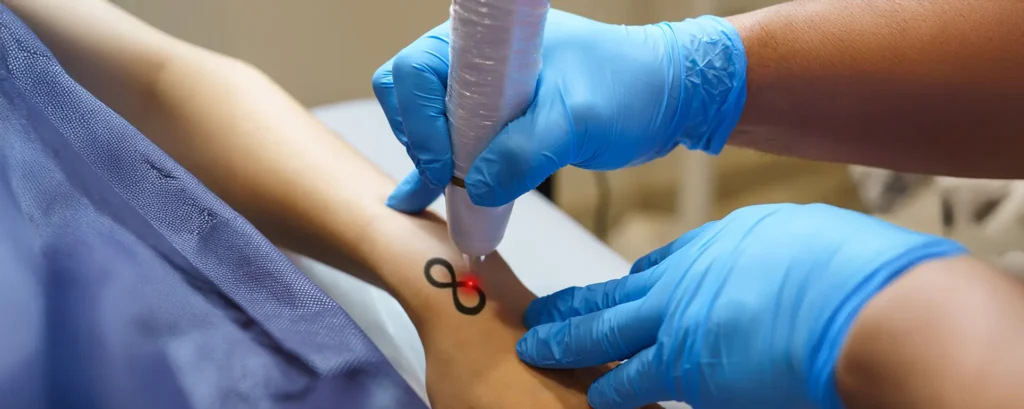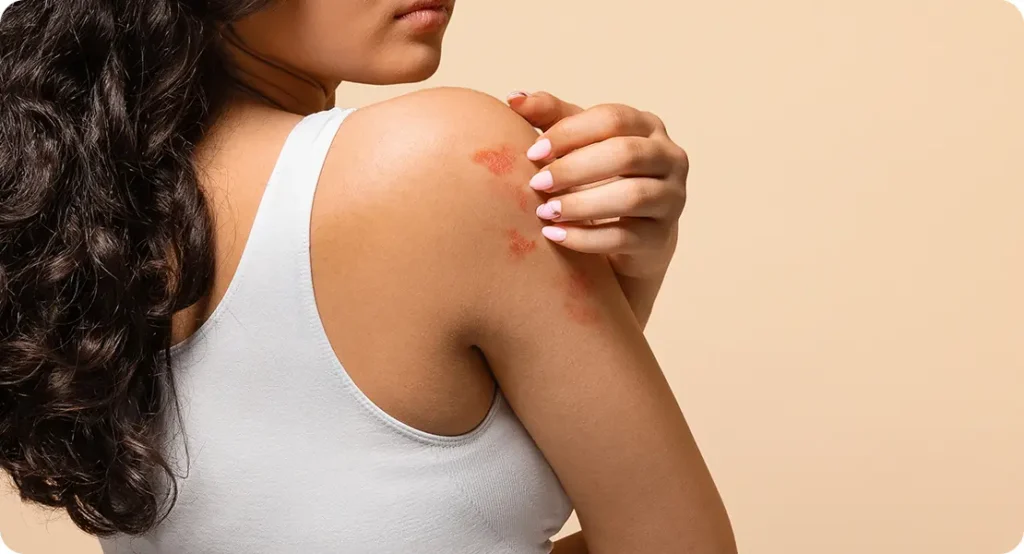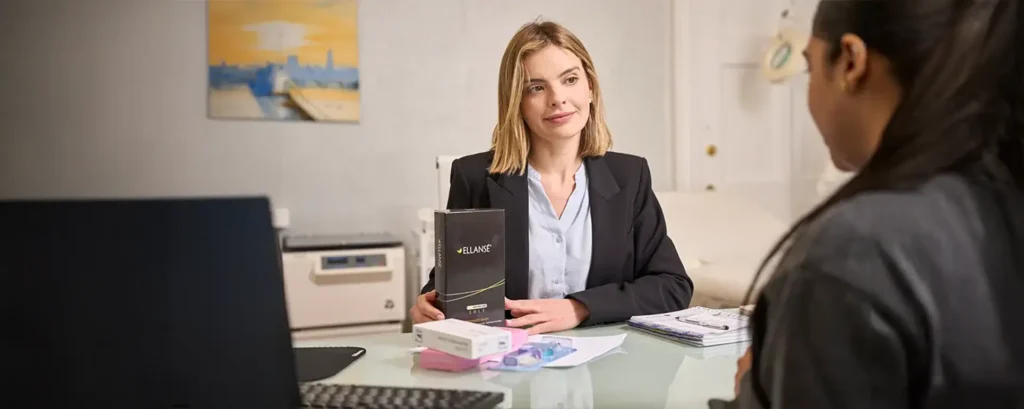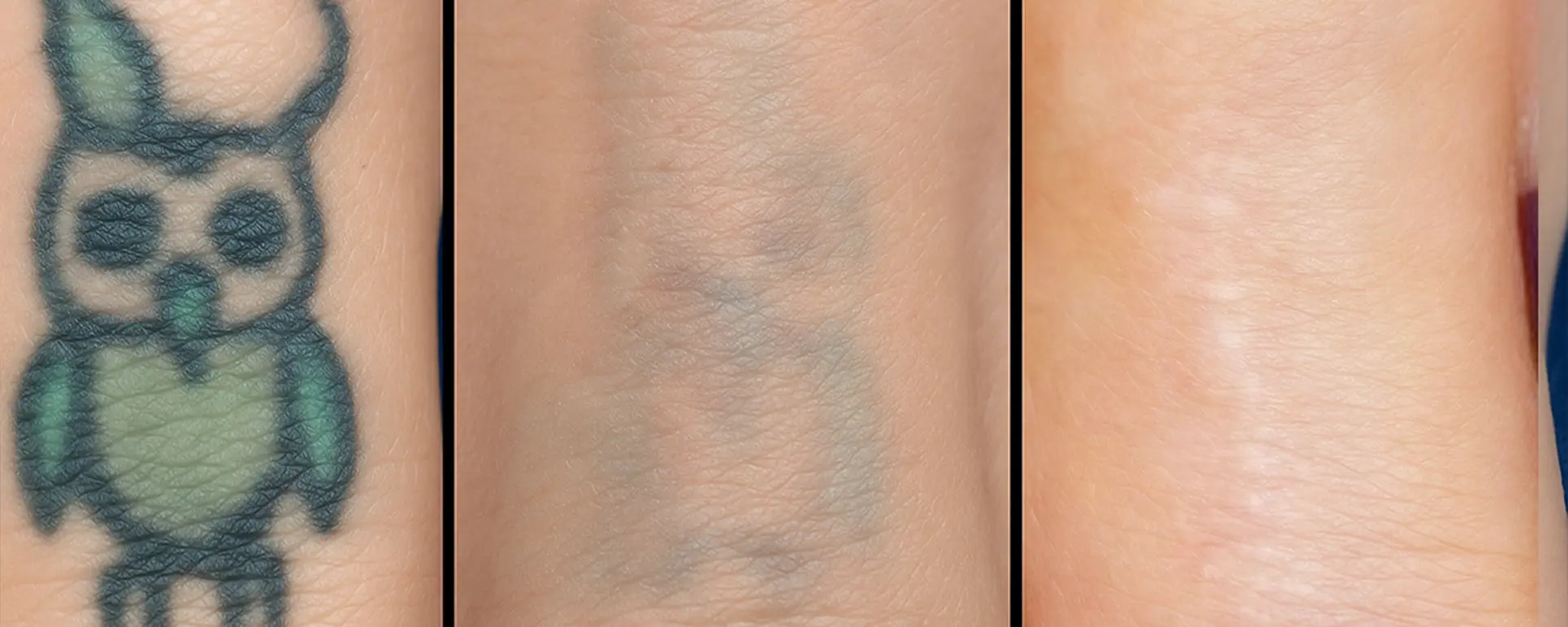So, you’ve finally made the decision to get that tattoo removed congratulations on taking this important step! Whether it was an impulsive design from years ago or something that no longer feels like “you,” choosing to undergo laser tattoo removal is a bold and empowering move. But here’s the thing: the process doesn’t end when you leave the clinic. In fact, proper aftercare is just as crucial as the treatment itself if you want smooth, scar-free results.
Laser tattoo removal works by targeting ink particles beneath the skin, breaking them down so your body can gradually eliminate them. This process can leave the skin temporarily inflamed, sensitive, or even slightly damaged, which means how you care for it in the days and weeks that follow plays a major role in how well you heal and how good your final results will look.
If you want to avoid complications like hyperpigmentation, infection, or scarring, understanding what to expect and how to support your skin through recovery is key. In this article, we’ll walk you through the typical healing timeline, the side effects that are perfectly normal (and the ones that aren’t), and the best aftercare tips to help your skin bounce back as smoothly as possible. Whether you’re just starting your removal journey or are midway through multiple sessions, this guide is packed with dermatologist-backed advice to help you heal confidently, comfortably, and with peace of mind.
Remember, great results don’t just come from the laser they come from your commitment to the healing process. Stick with it, and your skin will thank you.

What to Expect Immediately After Treatment
Laser tattoo removal works by using concentrated pulses of light to break down ink particles in the skin. These fragmented particles are then gradually flushed out by your body’s immune system over time. While the laser targets only the ink, the surrounding skin also absorbs some of the energy, which can cause temporary side effects. It’s completely normal for the skin to react, as it’s essentially going through a controlled trauma to eliminate the tattoo.
In the first 24 to 48 hours after treatment, you can typically expect:
- Redness and swelling around the treated area – This is the body’s natural inflammatory response and a sign that healing is underway. It often looks similar to a mild sunburn.
- Warmth or sensitivity – The area may feel hot to the touch or tender, which is also completely normal.
- Possible pinpoint bleeding or blistering – These can occur depending on the intensity and depth of the laser treatment, especially for tattoos with dense or dark ink. While blisters may seem concerning, they’re actually a sign that your body is working to remove the ink and should be left to heal naturally.
Other common side effects during the early healing phase include:
- Light bruising – Particularly around thinner or more vascular areas of skin, like the wrists or ankles. Bruising usually fades within a few days.
- Crusting or scabbing – As the skin regenerates, small scabs may form. This is part of the natural healing process and should not be picked at.
- Mild itching or tingling – As nerve endings begin to heal, you might experience sensations similar to those felt during the final stages of a mild burn or scrape. While uncomfortable, this is usually a sign of progress.
It’s important to resist the urge to scratch, scrub, or apply harsh products during this time. Keeping the area clean, dry, and protected will help your skin recover efficiently and reduce the risk of complications like infection or scarring.
Week-by-Week Recovery Timeline
Healing from laser tattoo removal doesn’t happen overnight. It’s a step-by-step process that unfolds over several weeks. While the surface of your skin might seem to improve fairly quickly, deeper healing continues behind the scenes as your immune system works to clear away the broken-down ink particles. Here’s a closer look at what you might experience week by week:
Week 1: The Initial Recovery Phase
During the first week after treatment, your skin is in the early stages of recovery. It’s normal to experience redness, swelling, and sensitivity, especially in the first couple of days. The treated area might feel sore, warm, or tender similar to a sunburn. These symptoms should start to ease up by the end of the week.
You might also notice scabs or small crusts forming. This is part of the natural healing process and shows that your skin is working hard to repair itself. It’s very important not to scratch or pick at the scabs, even if they itch. Doing so can lead to scarring or slow down the healing.
If you had any blistering, those blisters may begin to dry out and flatten within a few days. While they might look alarming, they’re a common reaction and will heal on their own if left undisturbed. Be gentle with the area clean it carefully and avoid tight clothing that might rub against the skin.
Week 2: Scabbing Clears, Skin Feels Tighter
By the second week, your skin will likely start to look and feel better. Most scabs and blisters should be gone, or at least in the final stages of healing. The redness will continue to fade, though your skin might still look a little pink or feel a bit dry and tight. You may also notice some light flaking or peeling, which is part of the body’s natural way of shedding damaged skin cells.
The treated tattoo may already start to look slightly lighter, depending on your skin type and the colour of the ink. This fading happens slowly and will become more noticeable over time, especially after multiple sessions.
You might also still feel a little itchiness or tingling as the skin regenerates. This is completely normal just be careful not to scratch.
Weeks 3–4: Deeper Healing and Fading
As you head into the third and fourth weeks after treatment, you’ll likely feel almost back to normal. The outer layers of your skin are mostly healed at this point. The pinkness or discolouration will continue to fade, and the area will begin to blend in more with the surrounding skin. However, the process of ink removal is still ongoing beneath the surface.
Even though you can return to your usual routines like working out, wearing makeup over the area, or using your regular skincare products it’s still important to be cautious. Keep the area moisturised, avoid scrubbing it too harshly, and stay out of direct sun. Your skin is still sensitive, and sun exposure can cause pigmentation issues or affect how well the tattoo fades.
Behind the scenes, your immune system is still breaking down and removing ink particles. It’s during this phase that the tattoo often continues to fade gradually. This is why results don’t appear all at once it takes time for your body to do its part.
How to Care for the Area
Taking care of your skin after laser tattoo removal is key to getting the best results and preventing any unwanted side effects. Proper aftercare not only helps your skin heal more quickly but also ensures that each session is as effective as possible. Think of it as giving your skin the support it needs to bounce back stronger. Follow these dermatologist-backed tips to stay on track:
1. Keep It Clean and Dry
In the first few days after treatment, keeping the area clean is your number one priority. Gently cleanse the skin using lukewarm water and a mild, fragrance-free soap. Avoid hot water, which can irritate the skin. After washing, pat the area dry with a clean towel or paper towel never rub, as the skin will be extra delicate and sensitive to friction.
Try to keep the area dry whenever possible, especially in the first 24 to 48 hours. If it accidentally gets wet (for example, during a shower), just dry it gently and avoid using any harsh or scented products.
2. Apply a Healing Ointment
Once the area is clean and dry, apply a thin layer of a non-comedogenic, dermatologist-recommended healing ointment, such as Cicalfate, Aquaphor, or a basic over-the-counter antibiotic cream. These ointments help form a barrier over the skin to lock in moisture, soothe irritation, and prevent infection.
Avoid thick or greasy products that could clog pores or slow the healing process. And if you’re unsure about which product to use, ask your clinician for a personalised recommendation based on your skin type.
3. Cover with a Sterile Bandage (If Needed)
During the first 24 hours after treatment, you might want to keep the area covered with a sterile, breathable bandage or dressing. This helps protect the healing skin from dust, bacteria, and any friction caused by clothing. If the area is in a spot that rubs against straps, waistbands, or tight fabrics, a bandage can offer added protection and comfort.
After the first day, you can often leave the area uncovered to allow it to breathe just make sure it stays clean.
4. Avoid Sun Exposure
Freshly treated skin is extremely sensitive to UV rays. Exposing it to the sun especially too soon can lead to hyperpigmentation, delayed healing, or even sunburn. It’s important to keep the area covered with clothing or shaded whenever possible.
Once the skin has fully re-epithelialised (meaning it’s no longer raw, peeling, or scabbed), you should start applying a broad-spectrum SPF 50 sunscreen to protect the area. Reapply regularly, especially if you’re outdoors for long periods. This step is essential to help prevent long-term discolouration and keep the area looking even-toned.
5. Don’t Scratch or Pick

As your skin heals, it’s very common to experience itchiness, flaking, or scabbing. While it can be tempting to scratch or peel, resist the urge! Picking at the skin can disrupt the healing process and dramatically increase your chances of scarring or infection.
Instead, soothe itchiness with gentle products like aloe vera gel or a moisturiser approved by your clinician. Wearing loose, breathable clothing can also help reduce irritation caused by fabric rubbing against the area.
6. Avoid Hot Showers, Saunas, and Pools
Until the skin barrier has fully healed, you’ll want to steer clear of hot environments that can aggravate your skin. Hot showers, steam rooms, saunas, and hot tubs can all increase inflammation, disrupt healing, and introduce bacteria to the vulnerable area.
Swimming pools especially chlorinated ones should also be avoided during the healing period. Chlorine can dry out the skin, delay recovery, and potentially lead to infection if the area isn’t fully closed. Stick to cool or lukewarm showers and give your body the time it needs to recover naturally.
When to Contact a Dermatologist
While most people recover smoothly from laser tattoo removal with only minor discomfort, it’s important to know when something doesn’t feel quite right. The skin is undergoing a controlled form of trauma during each treatment session, and while mild swelling, redness, or scabbing is expected, there are certain symptoms that could signal a more serious issue.
Pay close attention to how your skin responds in the days following your treatment. If you experience any of the following, it’s best to reach out to a dermatologist or skin specialist as soon as possible:
- Severe or worsening pain – Some tenderness is normal, especially in the first couple of days. But if the discomfort becomes intense, persists beyond a few days, or begins to increase rather than improve, it could indicate an underlying infection or reaction that needs medical attention.
- Thick yellow discharge or pus – A clear or slightly pink fluid is often part of normal healing, especially if blisters are present. However, yellow or green discharge, especially with a foul smell, is a sign of infection and should be evaluated right away.
- A fever – If your body temperature rises and you begin to feel unwell, it could be a sign that the body is fighting off an infection. Fever, when combined with other symptoms like chills or pus, should be taken seriously.
- A rash spreading from the treatment site – Localised redness is expected, but if you develop a rash that spreads beyond the treated area, or if you notice hives, swelling, or itching in unrelated areas, this may point to an allergic or inflammatory reaction.
- Unusual darkening or lightening of the skin – Some temporary pigmentation changes can occur, especially in individuals with medium to darker skin tones. However, if the skin develops patchy light spots (hypopigmentation) or intense darkening (hyperpigmentation) that doesn’t fade over time, a dermatologist can help manage it with topical treatments or laser options.
Don’t wait too long to seek help if something feels off. Early intervention can make a big difference in preventing long-term complications such as permanent scarring, pigmentation changes, or delayed healing. A qualified skin professional can assess the area, suggest the right treatment, and ensure that your tattoo removal journey stays on track with minimal setbacks.
Products That Can Help with Healing

Supporting your skin with the right aftercare products can make a big difference in how well and how quickly it recovers after laser tattoo removal. The goal is to soothe irritation, prevent infection, and protect the healing skin from environmental damage especially sun exposure. Below are some dermatologist-recommended products that are commonly used during the post-treatment phase:
- Cicalfate Repair Cream – This gentle, restorative cream is specifically designed to support damaged or sensitised skin. It creates a protective barrier while calming inflammation and promoting skin regeneration. Ideal for use in the first few days after treatment, it helps reduce redness and soothes discomfort. Its antibacterial properties also help lower the risk of infection.
- Fragrance-Free SPF 50 – Once your skin has healed enough for sun exposure (usually after re-epithelialisation), a broad-spectrum SPF 50 sunscreen is a must. Choose a formula that’s fragrance-free and non-comedogenic, so it won’t irritate sensitive skin. Sunscreen protects the treated area from UV-related pigmentation changes, which are more likely to occur on skin that’s been recently treated with lasers.
- Hydrating Serums (Hyaluronic Acid-Based) – As your skin repairs itself, it’s common to experience tightness, dryness, or mild flaking. Hyaluronic acid is a lightweight yet powerful hydrating ingredient that helps attract and retain moisture, supporting skin elasticity and comfort without clogging pores or irritating healing tissue. Apply once the surface skin is intact to boost hydration levels and maintain a smooth texture.
You don’t need a complicated skincare routine just a few targeted, high-quality products that nourish and protect. Always remember to:
- Patch test any new product before applying it to the entire treated area.
- Avoid harsh ingredients like alcohol, fragrance, or exfoliants during the healing phase.
- Follow your clinician’s recommendations, as they may suggest specific brands or formulations based on your skin type and the location of your tattoo.
Investing in proper skincare after each session will not only support smoother healing but also enhance your final tattoo removal results.
Final Thought: Heal Right for the Best Results
Your skin goes through a lot during laser tattoo removal but with the right aftercare, it can heal beautifully. Be patient, gentle, and consistent. You can get in touch with us to book a consultation at our tattoo removal clinic in London for tailored guidance and expert aftercare support.
References:
- Patil, U., Sharma, R., & Sharma, S., 2021. Laser tattoo removal: An updated review of methods, effectiveness and safety. Journal of Cutaneous and Aesthetic Surgery, 14(1), pp.11–18. Available at: https://www.ncbi.nlm.nih.gov/pmc/articles/PMC7980490/
- Uppal, R., Randhawa, N., & Anwar, A., 2021. Management of adverse effects after laser tattoo removal. Journal of Cutaneous and Aesthetic Surgery, 14(2), pp. 183–187. Available at: https://www.ncbi.nlm.nih.gov/pmc/articles/PMC8052783/
- Patil, S.S., Jain, V.K., & Joshi, N.D., 2019. Advances in laser tattoo removal techniques: A clinical update. Journal of Cutaneous and Aesthetic Surgery, 12(1), pp.1–8. Available at: https://www.ncbi.nlm.nih.gov/pmc/articles/PMC6972148/
- Alam, M., Hsu, T.S., Dover, J.S. & Arndt, K.A., 2003. Laser treatment of tattoos: A review of clinical and experimental studies. Journal of the American Academy of Dermatology, 47(5), pp. 733–757. Available at: https://www.ncbi.nlm.nih.gov/pmc/articles/PMC5605215/
- Kuperman-Beade, M., Levine, V.J. & Ashinoff, R., 2001. Laser removal of tattoos. American Journal of Clinical Dermatology, 2(1), pp.21–25. Available at: https://www.ncbi.nlm.nih.gov/pmc/articles/PMC4458934/
